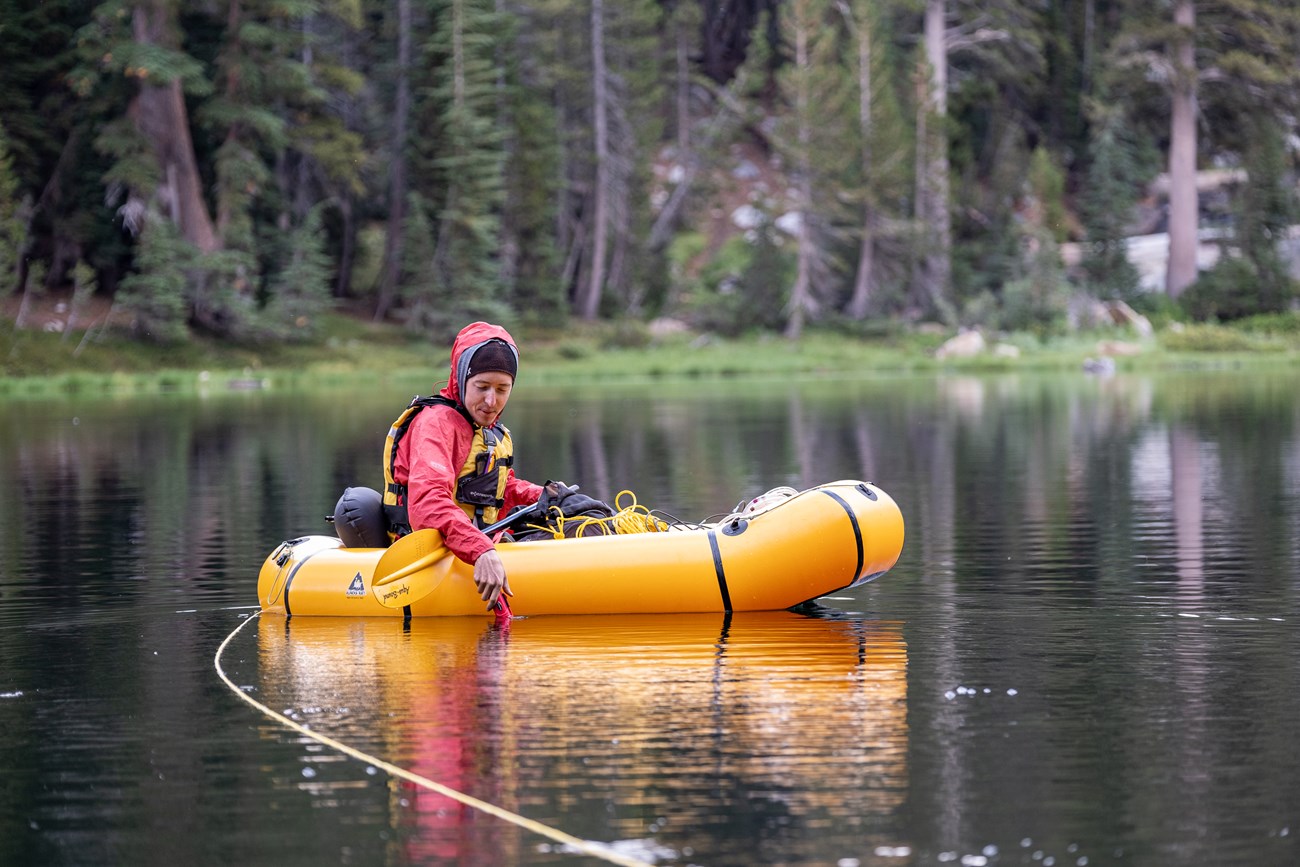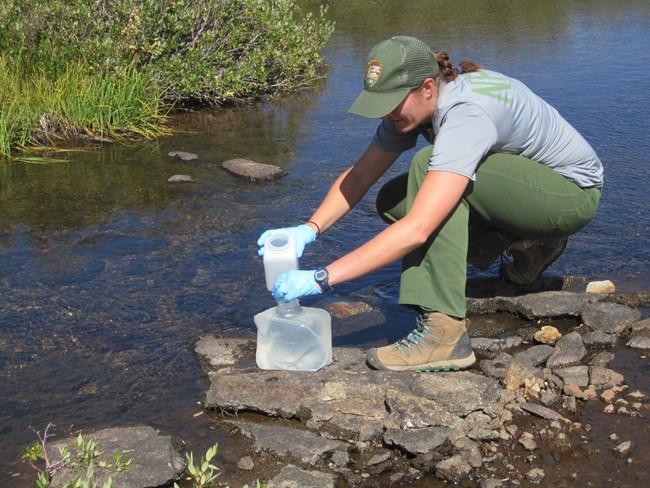
NPS photo by Dustin Garrison
Overview
Sequoia, Kings Canyon, and Yosemite national parks protect more than 1,200 lakes that have some of the highest water quality in the Sierra Nevada. Lakes provide habitat for aquatic and terrestrial organisms, including declining amphibian species. They are important to regional water supplies, and are popular visitor destinations. Despite their protected status in national parks, they are threatened by air pollution and climate change.
Each summer, field scientists hike to remote lakes scattered throughout the high country of these parks, collecting water samples and surveying shorelines for amphibians. With the samples they collect, we measure numerous water quality parameters, and one type of pollutant we measure is nutrients, such as nitrogen. Excess nutrients from air pollution increase algal growth, which reduces the clarity of clear, blue mountain lakes. Changes in nutrients and algae may also have effects on the larger food web of plants and animals that rely on these lakes.
This monitoring project enables us to track water quality trends, evaluate the effectiveness of environmental policies on park lakes, and provide information that informs park management decisions regarding lakes and the animals and plants that rely on them.

NPS Photo
Approach and Objectives
We monitor water quality (or chemistry) at a total of 76 randomly selected lakes: eight are sampled every year, and 68 are visited on a four-year rotation. Two additional index sites are sampled more than once during the summer/fall season to provide information on within-season variability in water chemistry. We survey shorelines for amphibians to provide information for the parks' frog restoration projects.
Monitoring objectives are:
- Detect long-term trends in lake water chemistry by measuring:
►Basic water quality parameters – Temperature, pH, specific conductance, dissolved oxygen, and acid neutralizing capacity
►Major ions – calcium, sodium, magnesium, potassium, chloride, sulfate
►A suite of nitrogen and phosphorus measures
►Particulate carbon -
Detect long-term trends in lake trophic condition, using nutrient ratios as chemical indicators of trophic status. "Trophic" refers to the productivity of a lake.
-
Characterize the status of Sierra Nevada Network lakes.
-
Determine the proportion of lakes with chemical characteristics above/below threshold values for selected constituents.
What's it like to be on a lake monitoring crew?
Explore our story map and watch the video below to join Sierra Nevada Network field scientists as they travel to remote areas and study lake ecosystems. Sierra Nevada national parks protect over 1200 lakes. Mountain lakes provide habitat for plants and animals and supply fresh water to downstream farms and communities. Their rugged settings and clear blue water make them popular hiking destinations. But the condition of these lakes is affected by deposition of air pollutants, warming temperatures, and non-native species. The information these scientists collect and share will help stewards make the best science-based decisions for our national parks.- Duration:
- 6 minutes, 40 seconds
In the remote heights of the Sierra Nevada mountains, a handful of strong women find themselves right at home. These adventurers are more than your average backpackers, though – they are scientists, sampling water quality in high-elevation lakes as part of the Sierra Nevada Network long-term monitoring program.
Learn More
Publications and Other Information
Source: NPS DataStore Saved Search 991. To search for additional information, visit the NPS DataStore.
Source: NPS DataStore Saved Search 1005. To search for additional information, visit the NPS DataStore.
Source: NPS DataStore Saved Search 1021. To search for additional information, visit the NPS DataStore.
Last updated: April 22, 2025
